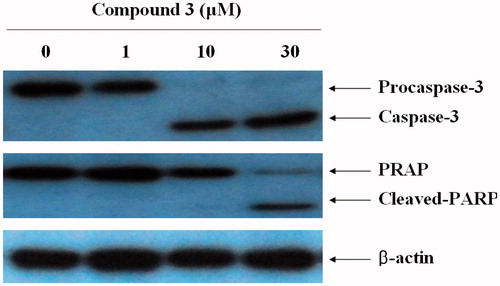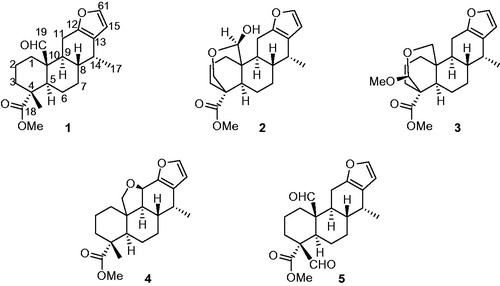Figures & data
Table 1. Cytotoxic activity of compounds 1–5 from the seed of C. sappan.
Figure 2. The increment of caspase-3 activity by compound 3 in HL-60 cells. After 12 h, 24 h, and 48 h incubation with the 3-treated HL-60 cells, the cell lysates were incubated at 37 °C with caspase-3 substrate (Ac-DEVD-AFC) for 1 h. The fluorescence intensity of the cell lysates was measured to determine the caspase-3 activity. The blank group was used as 0.1% DMSO-treated cells; camptothecin (7.8 µM) was used as a positive control. Data are presented as the mean ± SD of results from three independent experiments.

Figure 3. The induction of caspase-3 activation and PARP degradation by compound 3 in HL-60 cells. Western blot analysis of caspase-3 and PARP protein levels after exposure to compound 3. HL-60 cells were treated with compound 3 at the indicated concentrations. Protein (50 μg) from each sample was resolved by SDS-PAGE (10% (w/v) polyacrylamide gel).


